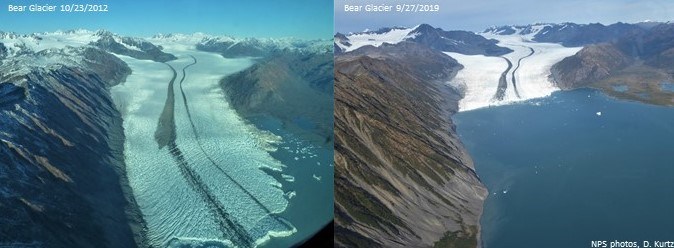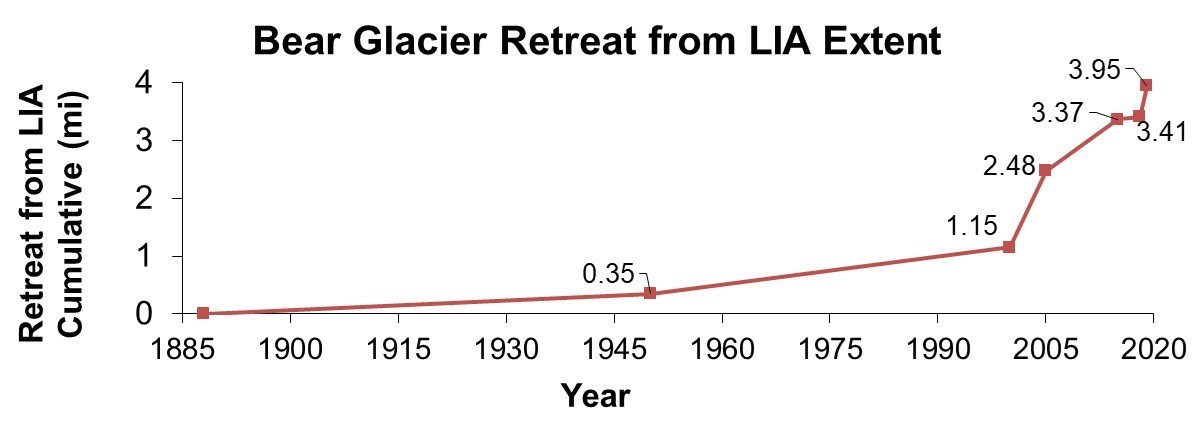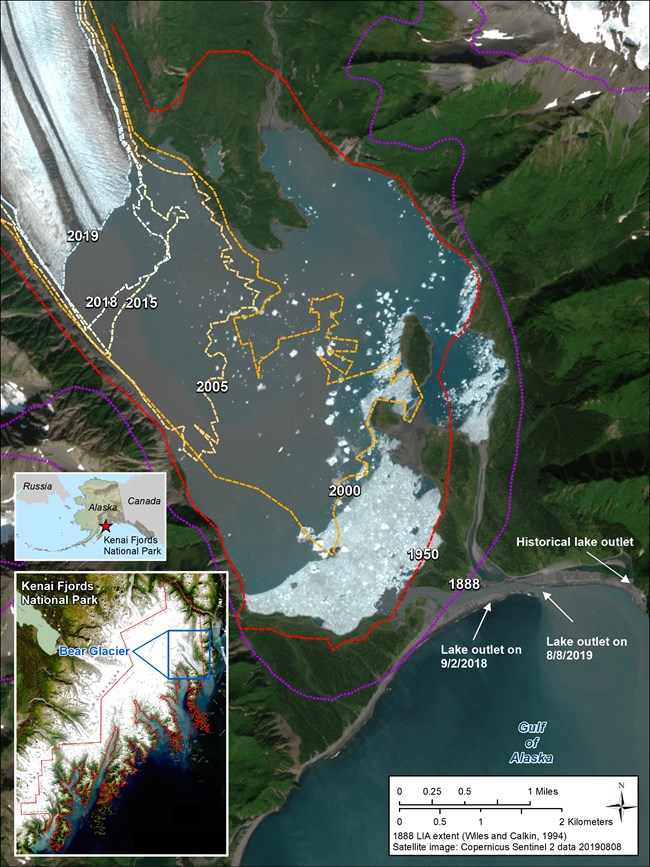Last updated: June 3, 2022
Article
Bear Glacier Retreat

Monitoring a Shrinking Glacier

Bear Glacier’s average annual rate of retreat has been increasing in recent years. Since Bear Glacier reached its Little Ice Age (LIA) maximum position in 1888 (1) it has retreated 4.0 mi (6.4 km), with most of that loss occurring since 1950.
In the last 14 years, from 2005-2019, Bear Glacier’s average annual rate of retreat has nearly doubled compared to the last half century with an average annual rate of 554.4 ft/year (169.0 m/year). From September 2, 2018 through August 8, 2019, Bear Glacier retreated 2,640 ft (900 m), resulting in a loss of 12.5 million sq ft (1.2 million sq m) of ice at the glacier’s terminus.

Retreat Linked to Multiple Factors
In addition to the unusually warm temperatures Southcentral Alaska experienced in 2019, this rapid retreat was likely the indirect result of a sequence of events that started with a glacial lake outburst flood (GLOF) that occurred here in August 2018. During the 2018 GLOF (2), water levels rose in Bear’s proglacial lake and breached the spit separating the warmer marine waters of the Gulf of Alaska from the ice-chilled proglacial lake. Following this breach, lake levels quickly dropped below normal levels. The newly incised and more direct lake outlet combined with low lake levels to allow marine water to inundate the previously freshwater lake during high tides. This not only increased the lake’s water temperature and salinity, it also introduced a tidal influence that helped to destabilize the glacier’s front.
The first time the park observed a GLOF event that breached the spit was in August 2014. The following winter, high energy storms produced enough wave action from the Gulf of Alaska to rebuild the spit within months of the breach. This forced the lake outlet to migrate eastward until it returned to its original, longer channel that prohibited marine water from entering the lake.
Unlike the 2014 event, conditions in winter 2018-2019 did not repair the spit and the direct outlet allowed marine water and tidally-influenced water level fluxes to persist in the lake for more than a year. It was these conditions that likely lead to the rapid retreat of Bear Glacier in 2019.

Remote Sensing Imagery Helps Quantify Results
Throughout summer 2019 the park received numerous reports of large calving events from local guiding companies working in the proglacial lake. While these observations provide direct evidence of the process of disarticulation of Bear Glacier’s terminus, remotely sensed imagery allows us to quantify, measure and document the resultant loss of areal ice.
For more information about Bear Glacier research, contact Deb Kurtz, Physical Scientist, Kenai Fjords National Park, at deborah_kurtz@nps.gov.
